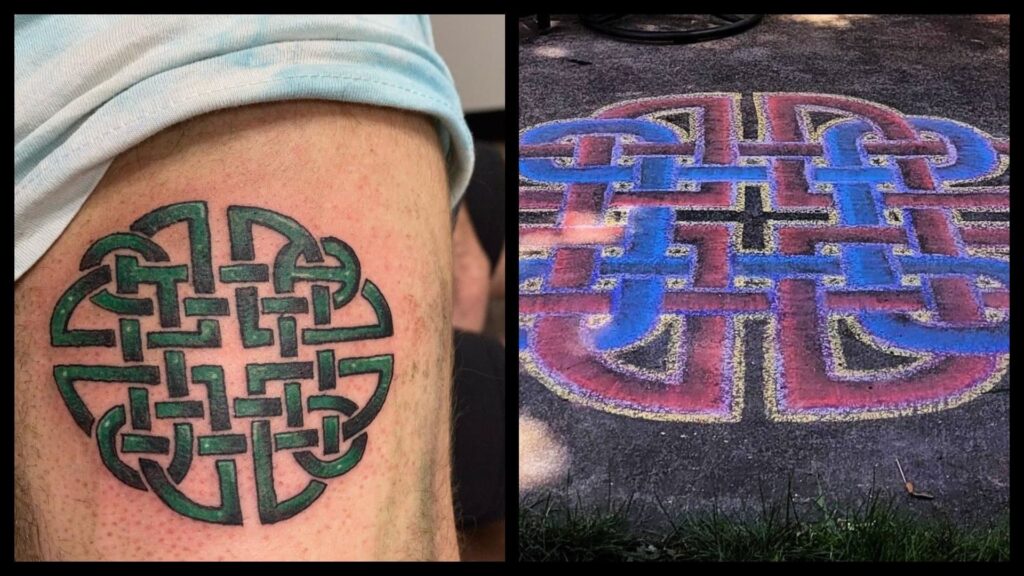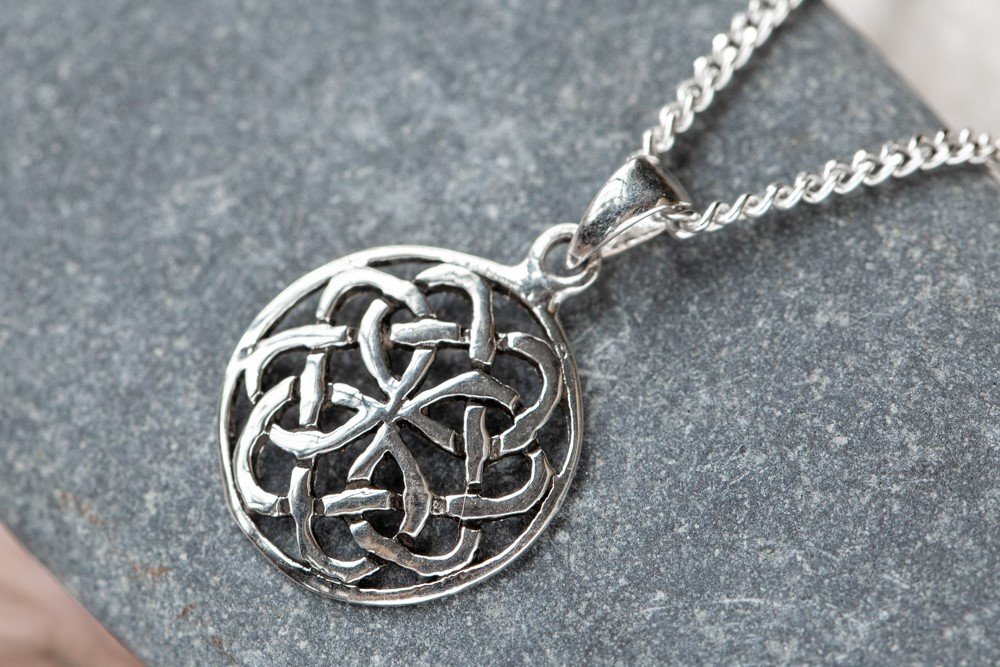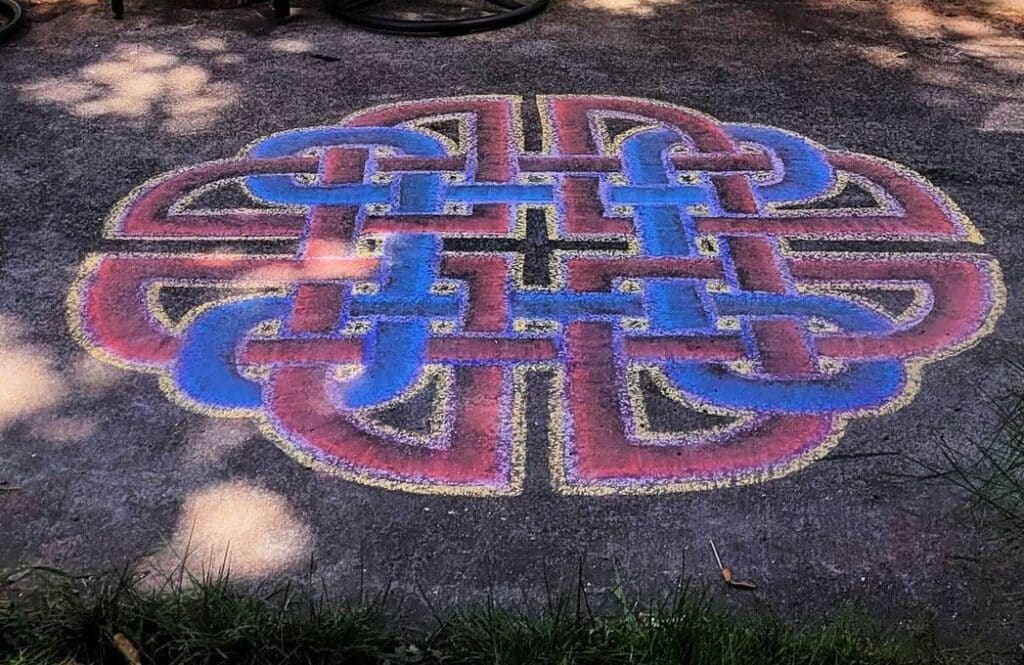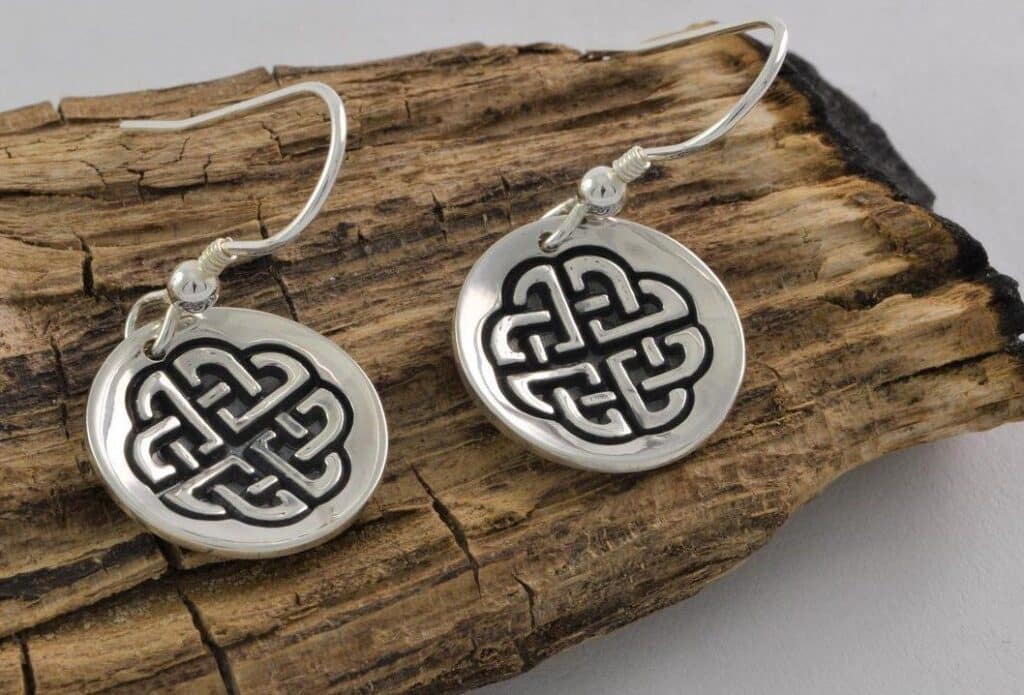Symbols are one of the most integral parts of Celtic and Irish culture. These emblems have travelled through history and are ingrained into many aspects of Irish culture today.

The Celtic Dara Knot is one of the most well-known Irish symbols deriving from the island’s Celtic heritage.
This symbol can be displayed in several different forms. It is used to represent strength and inner strength.
Often used today on Irish memorabilia, shop fronts, jewellery, and other things, here is the full meaning and origin behind the Dara Knot.
MII’s top facts about the Dara Knot
- Derived from the Irish word “doire,” meaning oak, this knot pays homage to the sacred oak tree held in high regard by ancient Celts.
- The knot’s four-cornered pattern signifies the four elements (earth, air, fire, water) and the balance between them in nature.
- In Celtic art, the Dara Knot can be found on jewellery, manuscripts, and stone carvings, showcasing its significance in various artistic expressions.
- It’s believed that wearing or displaying the Dara Knot can bring about personal transformation and inner strength.
- The Dara Knot’s enduring popularity continues to make it a cherished symbol, connecting modern enthusiasts with the rich cultural and spiritual heritage of the Celts.
What is the Dara Knot? – an iconic Irish symbol

The Dara Knot is one of the most intricate Irish Celtic symbols you are likely to come across.
This iconic Irish symbol has several different variations. All versions consist of intertwining lines with no clear beginning or end.
Modern Celtic knots can feature various different designs and patterns.
These include spirals, keys, steps, braids, plaits, and other designs. Dara Knots are often colourful designs. However, they can also be colourless engravings or simply painted black and white.
Origin – links to the ancient Celts

Scholars believe that ancient Celtic knots were used for both secular and religious purposes.
Ancient Celtic knots can be found on Christian monuments, manuscripts, and ornaments dating around the eighth century. You can see evidence of Celtic knots in the Book of Kells at Trinity College in Dublin.
However, the use of interlaced patterns dates much further back than this, with origins in the Roman Empire. Knots first appeared as symbols in the third and fourth centuries and appeared on Roman floor mosaics.
These symbols also found their way into many different cultures and religious practices, including Byzantine architecture, Islamic art, Coptic art, and Celtic art. Thus, they finally made their way into Celtic Christian symbolism.
Read also: The Irish Celtic symbol for family.
Celtic knots – a central part of Celtic symbolism

The Dara Knot is one of many symbols used by the Celts to convey meaning, which is often spiritual.
Celtic knots are generally based around seven themes: man, plant, mammal, bird, insect, reptile, and fish.
One of the most central aspects of the different knots is their never-ending lines, which represent a never-ending life cycle. Each loop of the knot is used to illustrate how an individual is interwoven into all aspects of life.
Related: The top 10 Irish Celtic symbols and their meanings.
Meaning – strength and inner strength

The word Dara derives from the Gaelic word ‘Doire’, meaning ‘oak tree’.
Thus, we can link the Dara Knot o the symbolism of the oak tree. The intertwining lines of the knot are inspired by the intricate root system of the ancient tree.
Ancient Celts believed the oak tree to be sacred, and they based many stories and lessons around it for their daily lives. Even today, many people consider the oak tree to be the ‘King of the Forest’.
To the Celts, the oak tree’s roots represented divine resources and inner strength, including leadership, wisdom, and destiny.
Thus, the Dara Knot reminded people to unite in difficult times and draw on their inner strength to get through tough challenges.
Celtic knot variations – prominent Irish symbolism

Celtic knots are a common aspect of Irish symbolism and culture, with many other variations aside from the Dara Knot.
There are eight basic variations of the Celtic knot, including the Trinity Knot, the Celtic Love Knot, and the Celtic Cross. Other variations include the Spiral Knot, the Celtic Shield Knot, the Dara Knot, the Solomon’s Knot, and the Celtic Sailor’s Knot.
Perhaps the most well-known Celtic knot is the Trinity Knot or Triquetra. Triquetra derives from a Latin word meaning ‘triangular’ and ‘three-cornered’, fitting for this three-knotted design.
READ HERE for a detailed article on Celtic knots: the history, variations, and meaning
The Trinity knot – the power of three in Irish tradition

The three elements of the Trinity Knot fits with the Celtic belief that everything in life came in threes.
For example, the three stages of life: life, death, and rebirth; the three religious elements: the Father, the Son, and the Holy Spirit; and the three domains: earth, sea, and sky, or past, present, and future.
Another well-known Irish Celtic knot is the Spiral Knot or Triskelion, representing family. Consisting of three conjoined symmetrical spirals, this knot also fits with the Celtic belief in sets of three.
Check out: Why does the world love a symbol of Ireland.
Your questions answered about Irish symbol, the Dara Knot
What other symbols are popular in Irish culture?
Several symbols are popular in Irish culture, each holding its own historical and cultural significance, including the shamrock, the Claddagh ring and the Irish harp.
Is the Dara knot Welsh?
The Dara knot, an ancient Celtic Symbol, the oldest one known from the Welsh Celts.
What is the coolest Celtic knot?
The elaborate Triquetra, also known as the Trinity Knot or Celtic Triangle, is one of the most beautiful Irish Celtic symbols and it shows a circle interwoven with a continuous three-pointed symbol.

